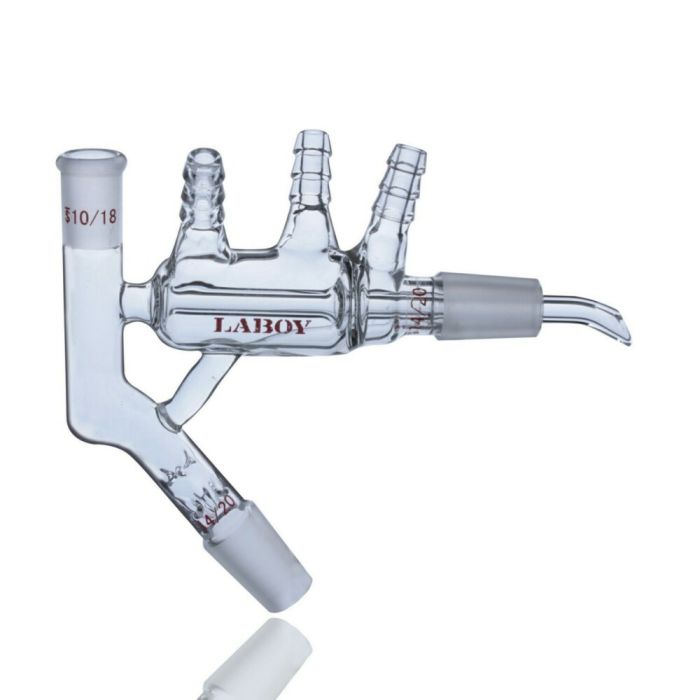Laboy Glass Short Path Distillation Head for Efficient Vacuum Distillation and Separation
- KEY COMPONENT IN SHORT PATH DISTILLATION----The short path distillation head is the core of a vacuum short path distillation apparatus involving the vapor from the heating flask travelling a short distance before being condensed at reduced pressure ideal for separating compounds that are unstable at higher temperatures and purifying small quantities of compound.
COMPACT DESIGN-----It is designed with a very short path for vapor passing from the heating flask to a connected condenser part.Comparing to the liebig condenser in a conventional distillation apparatus, , the condenser part on the head is very short too.With sealed in thermometer joint at top accommodating a glass thermometer with 10/18 joint,instead of an extra thermometer adapter.it is combined multi functions of a 3 way connecting adapter,a thermometer adapter,a liebig condenser.
HIGH QUALITY---Laboy glass distillation heads are all made of high quality boroslicate glass according to ASTM E438,heavy wall design,durable and reusable.The ground joints are precisely grounded according to US standard.
Short path distillation is a compact purification method of vacuum distillation involving the vapor from the heating flask (a round bottom flask with standard joint)travelling a short distance, often only a few centimeters into the tubing before being condensed.A short path ensures that little compound is lost on the sides of the apparatus.Because it uses a lower boiling temperature, short-path distillation equipment has advantage for separating compounds that are unstable at higher temperatures. It鈥檚 also beneficial for purifying small quantities of compound.
The short path distillation head is a key component in a short path distillation apparatus,it is designed with a very short path with thermometer joint for vapor passing from the heating flask to a connected condenser part.The condenser part on the head is very short too comparing to the liebig condenser in a conventional distillation apparatus.The short path distilling usually takes place in vacuum,there is an extra glass hose connection designed at the end of the condenser part for vacuum purpose.
In a short path distillation,a distilling head is usually inserted into a distillation flask(round bottom flask)where the vapor is from with the lower male joint.The upper 10/18 thermometer joint accommodates a glass thermometer with 10/18 joint to monitor the temperature.The male joint at the end of the condenser part is used to connect a cow type receiver to distribute the distillates into receiving flasks.With three hose connections on the condenser parts accommodating rubber tubing for water and vacuum.
Made of high quality borosilicate glass 3.3 having very low coefficients of thermal expansion for resistance to heat, and a very high resistance to chemical attack.Annealed at 800 degree Celsius ,can be heated directly in an open flame and can withstand typical laboratory thermal variations in Chemistry processes like heating and cooling.

